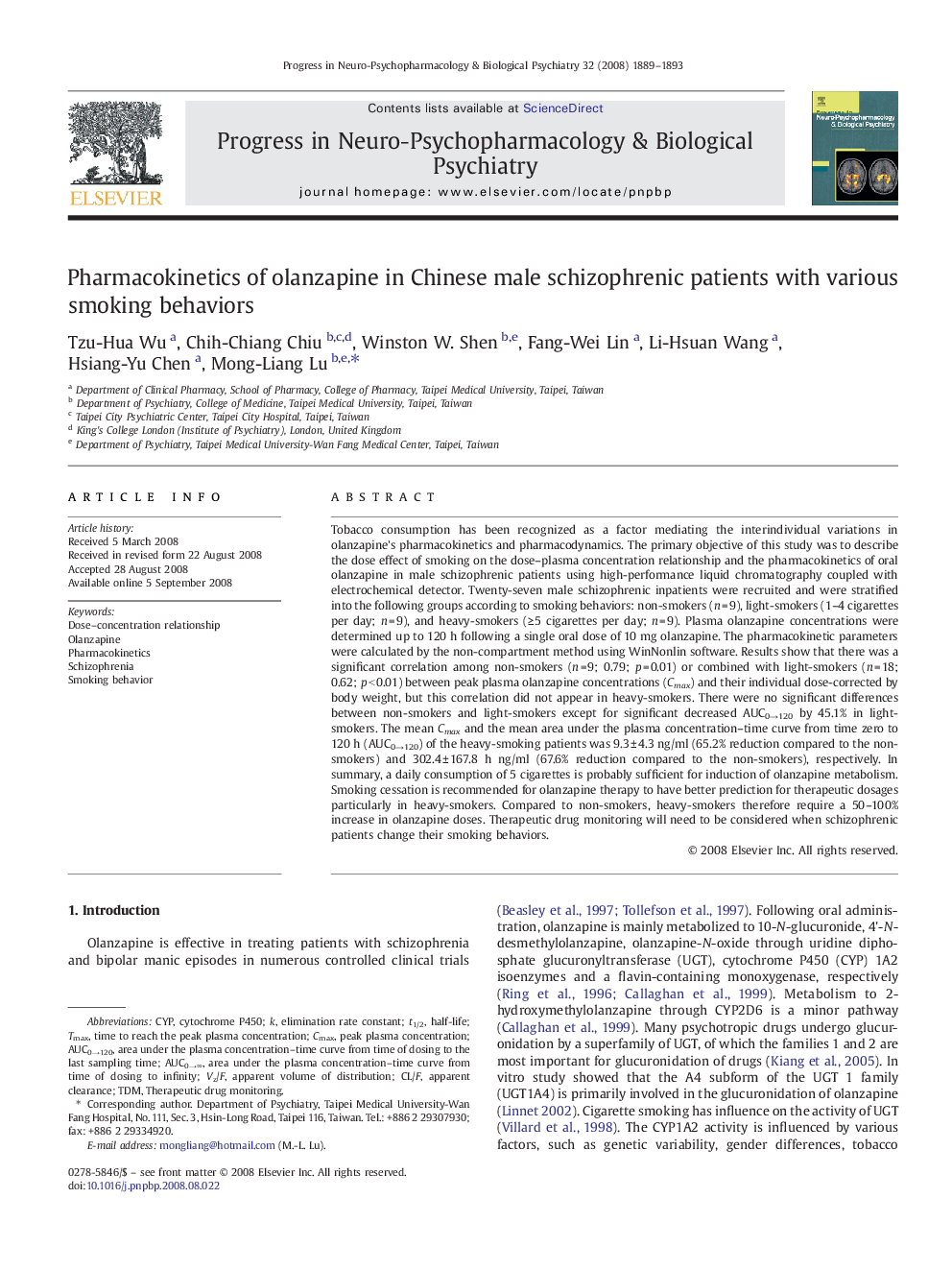| Article ID | Journal | Published Year | Pages | File Type |
|---|---|---|---|---|
| 2565292 | Progress in Neuro-Psychopharmacology and Biological Psychiatry | 2008 | 5 Pages |
Tobacco consumption has been recognized as a factor mediating the interindividual variations in olanzapine's pharmacokinetics and pharmacodynamics. The primary objective of this study was to describe the dose effect of smoking on the dose–plasma concentration relationship and the pharmacokinetics of oral olanzapine in male schizophrenic patients using high-performance liquid chromatography coupled with electrochemical detector. Twenty-seven male schizophrenic inpatients were recruited and were stratified into the following groups according to smoking behaviors: non-smokers (n = 9), light-smokers (1–4 cigarettes per day; n = 9), and heavy-smokers (≥ 5 cigarettes per day; n = 9). Plasma olanzapine concentrations were determined up to 120 h following a single oral dose of 10 mg olanzapine. The pharmacokinetic parameters were calculated by the non-compartment method using WinNonlin software. Results show that there was a significant correlation among non-smokers (n = 9; 0.79; p = 0.01) or combined with light-smokers (n = 18; 0.62; p < 0.01) between peak plasma olanzapine concentrations (Cmax) and their individual dose-corrected by body weight, but this correlation did not appear in heavy-smokers. There were no significant differences between non-smokers and light-smokers except for significant decreased AUC0→120 by 45.1% in light-smokers. The mean Cmax and the mean area under the plasma concentration–time curve from time zero to 120 h (AUC0→120) of the heavy-smoking patients was 9.3 ± 4.3 ng/ml (65.2% reduction compared to the non-smokers) and 302.4 ± 167.8 h ng/ml (67.6% reduction compared to the non-smokers), respectively. In summary, a daily consumption of 5 cigarettes is probably sufficient for induction of olanzapine metabolism. Smoking cessation is recommended for olanzapine therapy to have better prediction for therapeutic dosages particularly in heavy-smokers. Compared to non-smokers, heavy-smokers therefore require a 50–100% increase in olanzapine doses. Therapeutic drug monitoring will need to be considered when schizophrenic patients change their smoking behaviors.
